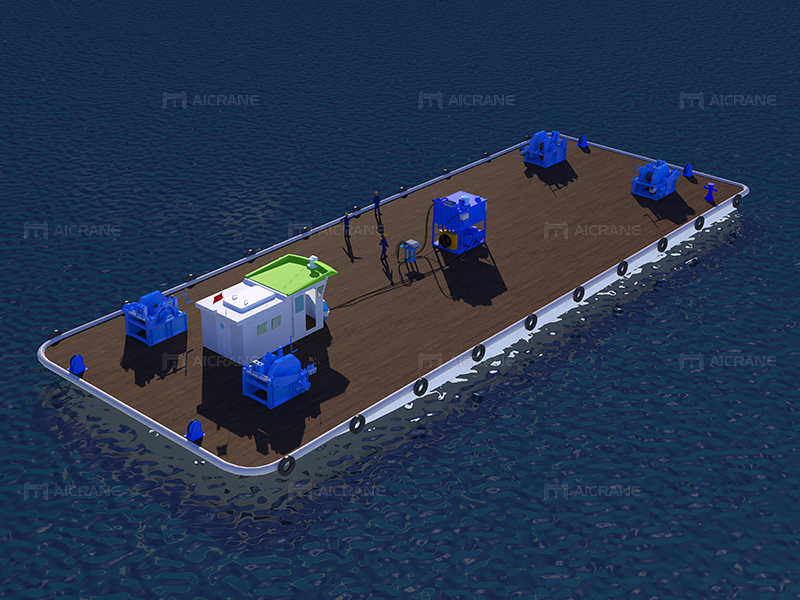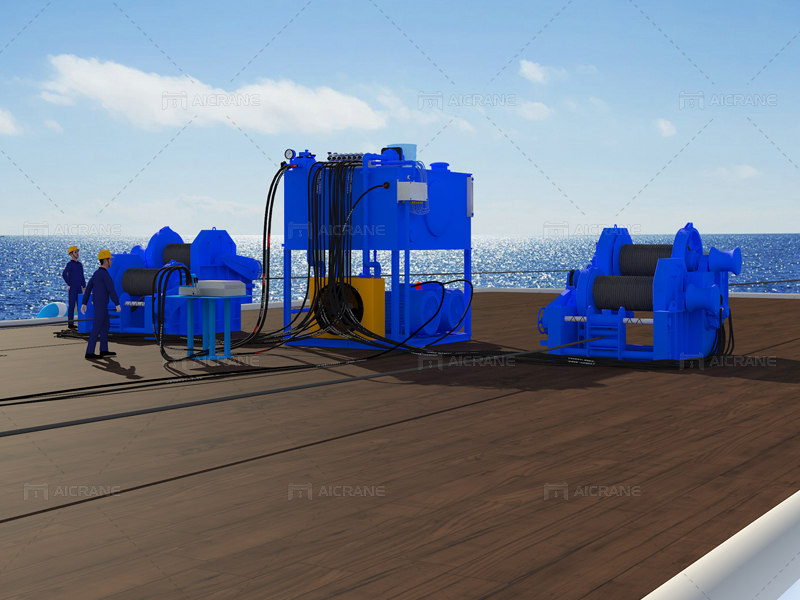Hydraulic winches play a pivotal role in various marine industries, offering robust and reliable solutions for lifting, pulling, and positioning heavy loads. These versatile devices are not one-size-fits-all; instead, their designs are tailored to meet the specific demands of different marine sectors. In this article, we explore the variations in hydraulic winch designs across diverse marine industries, highlighting the unique features that make them indispensable in their respective applications.

Offshore Oil and Gas Industry:
In the offshore oil and gas sector, where harsh environmental conditions and heavy loads are commonplace, marine hydraulic winches are designed to withstand corrosive saltwater exposure and operate efficiently in extreme weather. These winches often feature robust construction materials, enhanced corrosion resistance, and fail-safe mechanisms to ensure the safety of personnel and equipment during critical operations.
Commercial Fishing:
Hydraulic winches used in commercial fishing vessels are designed with a focus on durability, precision, and ease of operation. These winches are equipped with specialized drum configurations to accommodate various fishing gear, such as nets and trawls. Additionally, hydraulic systems offer precise control, allowing fishermen to navigate the winch with accuracy during the hauling process.
Marine Construction:
In the realm of marine construction, hydraulic winches are tailored to handle the unique challenges posed by heavy lifting and positioning tasks. These winches often feature high line pull capacities and are equipped with advanced load control systems to ensure precise placement of construction materials and equipment. Robust build quality and resistance to abrasive materials are crucial considerations in this demanding environment.

Research and Exploration Vessels:
Research vessels engaged in scientific exploration require hydraulic winches designed for versatility. These winches are often equipped with multiple drums and variable speed controls to accommodate a diverse range of research equipment, such as oceanographic sensors and remotely operated vehicles (ROVs). Their designs prioritize adaptability to support a wide array of scientific missions.
Tugboats and Towage:
Tugboats and towage operations demand hydraulic winches with exceptional strength and reliability. These winches are engineered for high line pulls to effectively tow and maneuver large vessels. Moreover, they incorporate features like automatic spooling and tension control systems to enhance operational efficiency during towing operations.
Dredging and Marine Excavation:
Hydraulic winches employed in dredging and marine excavation applications are designed to handle the complexities of moving sediment and debris. These winches often feature high torque capabilities for efficient excavation and specialized drum configurations to manage dredge pipelines. Hydraulic systems provide the necessary power and control for precise dredging operations.
Yacht and Pleasure Craft Industry:
In the yacht and pleasure craft sector, hydraulic winches are designed with a focus on convenience and ease of use. These marine winches often incorporate compact designs, lightweight materials, and user-friendly controls. Hydraulic systems provide a smooth and controlled operation, catering to the needs of yacht owners and crew members during sailing and mooring activities.
Conclusion:
In conclusion, the versatility of hydraulic winches is evident in their varied designs tailored to meet the specific demands of different marine industries. Whether supporting offshore oil and gas exploration, aiding in marine construction projects, or facilitating scientific research, hydraulic winches are indispensable tools that contribute to the efficiency, safety, and success of diverse marine operations. As technology continues to advance, we can expect further innovations in hydraulic winch designs, ensuring their continued relevance and adaptability across the ever-evolving landscape of marine industries.